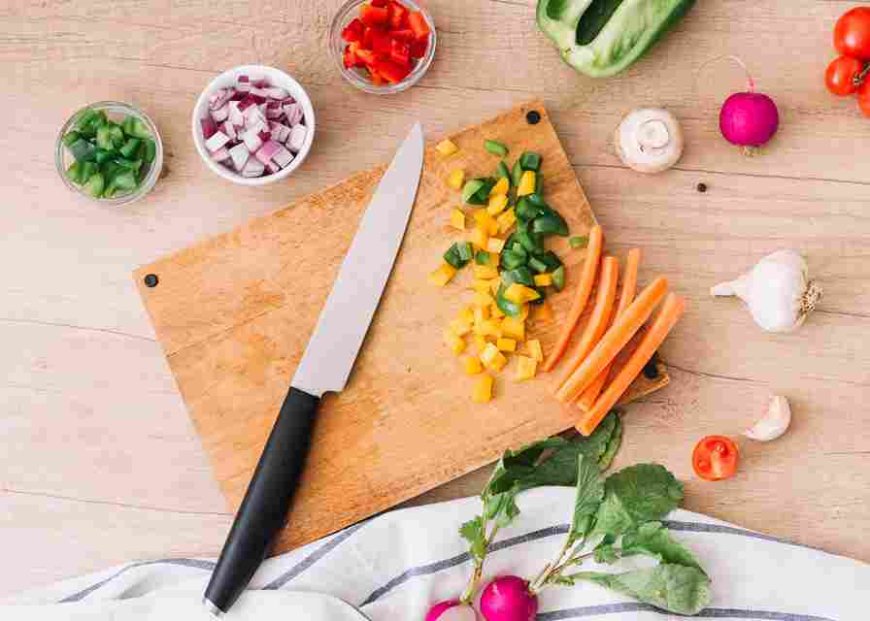How to Use Each Knife in Your Knife Set: A Beginner’s Guide
Having a good knife set in your kitchen is essential for making cooking easier, safer, and more efficient. However, many beginners often feel ov

Having a good knife set in your kitchen is essential for making cooking easier, safer, and more efficient. However, many beginners often feel overwhelmed by the different types of knives and are unsure about their specific uses. Understanding how to properly use each knife in your knife set not only improves your cooking experience but also helps maintain the knives for a longer life.
This guide will explain the most common knives found in a typical knife set and how to use each one effectively.
1. Chef’s Knife
The chef’s knife is the most versatile and essential knife in any kitchen. It usually measures between 8 to 10 inches and features a broad, sharp blade that tapers to a point. This knife is designed for a variety of tasks such as chopping, slicing, dicing, and mincing vegetables, fruits, herbs, and meats.
How to use: Hold the handle firmly and use a rocking motion while chopping. The wide blade allows you to scoop up chopped items and transfer them to a pot or bowl. It’s ideal for most everyday kitchen tasks.
2. Paring Knife
The paring knife is a small knife with a blade typically 3 to 4 inches long. It is perfect for detailed and delicate work such as peeling fruits and vegetables, deveining shrimp, trimming fat, or making intricate cuts.
How to use: Use the paring knife for controlled cuts by holding the blade close to the tip and working slowly. This knife works best when you need precision rather than power.
3. Bread Knife
A bread knife has a long blade with serrated edges, usually around 8 to 10 inches long. The serrations help to cut through tough crusts without crushing the soft interior of bread, making it ideal for slicing bread, baguettes, and cakes.
How to use: Use a gentle sawing motion when cutting bread or other baked goods. Avoid pressing down hard, as the serrated edge will do the work for you. It can also be used to slice tomatoes or citrus fruits without squashing them.
4. Utility Knife
The utility knife is smaller than a chef’s knife but larger than a paring knife, usually about 5 to 7 inches long. It is a multipurpose knife useful for slicing sandwiches, cutting meat, or chopping smaller vegetables.
How to use: Use the utility knife for tasks that require more precision than a chef’s knife but more power than a paring knife. It is a good all-around knife for everyday kitchen use.
5. Santoku Knife
The santoku knife is a Japanese-style all-purpose knife, similar in size to a chef’s knife but with a shorter, wider blade that often has a granton edge (small dimples) to reduce sticking. It is excellent for chopping, slicing, and dicing.
How to use: Use a straight up-and-down chopping motion rather than rocking. The santoku knife works well with vegetables, fish, and boneless meats.
6. Carving Knife
The carving knife has a long, thin blade that allows for precise slicing of cooked meats like roasts, turkey, and ham. The blade is designed to create thin, uniform slices.
How to use: After your meat is cooked and rested, use smooth, long strokes with the carving knife to slice. Avoid using a sawing motion to maintain clean cuts.
7. Boning Knife
The boning knife has a thin, flexible blade designed to separate meat from bones and trim fat or sinew. It typically measures 5 to 6 inches.
How to use: Use the pointed tip and narrow blade to carefully maneuver around bones and joints. It is best used with a controlled slicing motion to avoid wasting meat.
Knife Safety Tips for Beginners
-
Always use a cutting board and ensure it is stable.
-
Keep knives sharp to reduce the risk of slipping.
-
Hold the knife properly with a firm grip.
-
Curl your fingers of the hand holding the food inward to avoid accidental cuts.
-
Clean knives immediately after use and dry them thoroughly.
-
Store knives in a knife block or on a magnetic strip to protect blades and prevent accidents.
Caring for Your Knife Set
Proper care will extend the life of your knives. Always hand wash knives with mild soap and warm water, and dry them immediately to prevent rust or damage. Avoid placing knives in the dishwasher, as the harsh detergents and heat can dull blades and damage handles. Regularly sharpen your knives with a whetstone or sharpening tool to maintain their edge.
Read more blogs on newsquo.com
Download lifesmile application from app and play store







































































































![Building A Digital PR Strategy: 10 Essential Steps for Beginners [With Examples]](https://buzzsumo.com/wp-content/uploads/2023/09/Building-A-Digital-PR-Strategy-10-Essential-Steps-for-Beginners-With-Examples-bblog-masthead.jpg)















![How to Use GA4 to Track Social Media Traffic: 6 Questions, Answers and Insights [VIDEO]](https://www.orbitmedia.com/wp-content/uploads/2023/06/ab-testing.png)

































